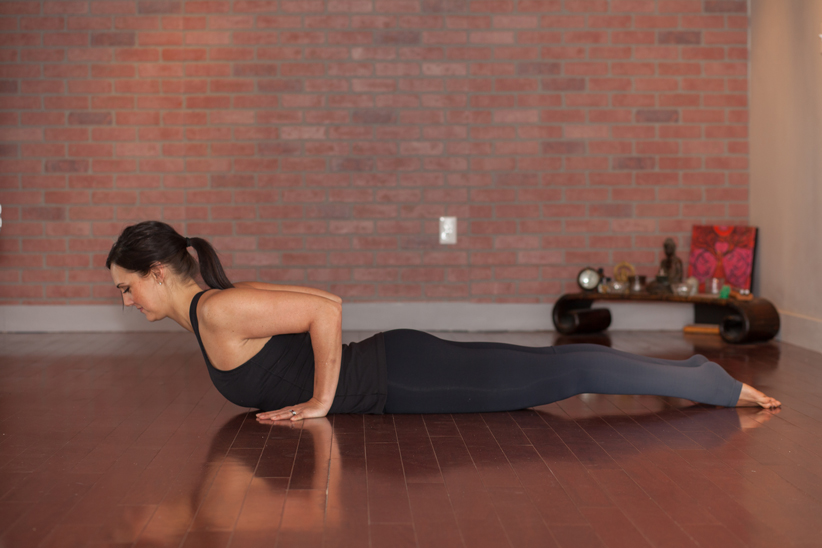When we back off a little we have the opportunity to notice if we feel more heart opening in low cobra or upward-facing dog. And in that space we can be more mindful of whether we are practicing in service of our self or our ego.

Image by Siobhan Beasley Photography
Many poses are considered preparatory poses: poses that simply serve as preparation for a bigger, better pose. These poses can sometimes seem like intermediaries that have fewer benefits or require less skill than their big brother counterparts. In truth, many of these prep poses have their own unique benefits, while also being accessible enough for everyone to experience with far less risk of injury.
Low cobra, baby cobra, or low bhujangasana is one such pose. Often, in our eagerness to get to urdhva mukha svanasana, upward facing dog, we overlook the importance and benefits that its sister pose low cobra offers.
At first glance, baby bhujangasana looks like a humble pose not fit for advanced practitioners. It appears we are simply lying on our bellies and lifting the chest. In fact, when performed with skill the entire back body is working, from the calves to the hamstrings, not to mention the quads, to the erector spinae muscles. We also get the opportunity to not only strengthen the oft-forgot muscles of the thoracic spine, but also to stretch the ever-tight pectoral muscles. It’s not often in our asana practice that we can isolate these two muscle groups and hold them for long periods of time so that we can work the small actions. Clearly, just by looking at a well-aligned upward facing dog one can see the same muscle groups are being opened and strengthened. The down side of urdhva mukha svanasana is the potential for injury because of an inability to work the actions as skillfully with the added level difficulty.
In low cobra, however, there is the opportunity to pay attention to the smaller details of the pose. Are the wrists placed directly under the shoulders so that when the elbows pin in the chest stays more open the shoulders more lifted? Or, did your body subconsciously cheat the hands closer to the shoulders? Then there are the feet, which may tell the story of the low back. Often the pinky toes peel away from the mat because the gluteal muscles have taken over, which causes narrowing in the lower back.
Little details like this make the pose that much harder, thus keeping the mind that much more focused. Plus, once these sorts of specifics are consistently practiced here, they carry themselves into the bigger versions of the backbend. For example, consistently firming the outer ankles, pressing down through the pink toes and rotating the inner thighs up to the ceiling in baby cobra will imprint the exact same actions needed to keep upward facing dog safe.
The fancy poses certainly look pretty and require intense concentration. The more humble poses, however, can also be a place for us to find the deeper meaning of yoga. Low cobra allows us to shift the concentration from pure physical effort to mental effort. When we back off a little we have the opportunity to notice if we feel more heart opening in low cobra or upward-facing dog. And in that space we can be more mindful of whether we are practicing in service of our self or our ego. The Bhagavad Gita tells us that yoga is skill in action. So, are we performing actions or simply performing? When we back off, we can practice the poses with more interest in skillful action and less interest in the illusion of the pose.
Photography by: Siobhan Beasley Photography
Kristin Olson (E-RYT 500, MS) is the studio owner at Home Yoga in Andover, Massachusetts – both their Chestnut Street and North Main Street locations. Her classes and teacher training programs combine Ashtanga’s emphasis on connecting breath with movement and Iyengar’s emphasis on proper alignment. It has been her experience that these seemingly disparate yoga traditions offer students the ability to quiet the mind while also strengthening and opening the body. Kristin’s teaching has been strongly influenced by internationally esteemed yoga teacher Natasha Rizopoulos, with whom she earned both her 200-hour and 500-hour Yoga Alliance-compliant teacher certificate. In addition to her teaching, she assists Natasha with YogaWorks teacher trainings and at Kripalu Yoga Center. She also studies regularly with revered master Iyengar yoga teacher Patricia Walden.
